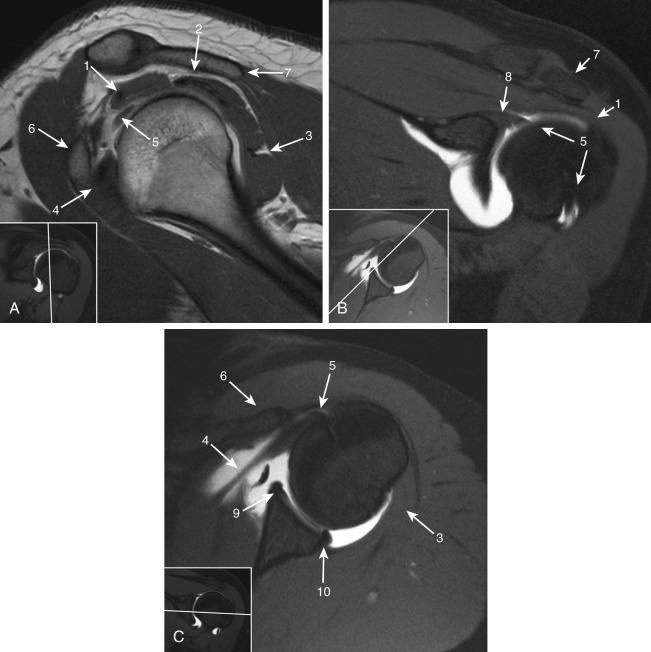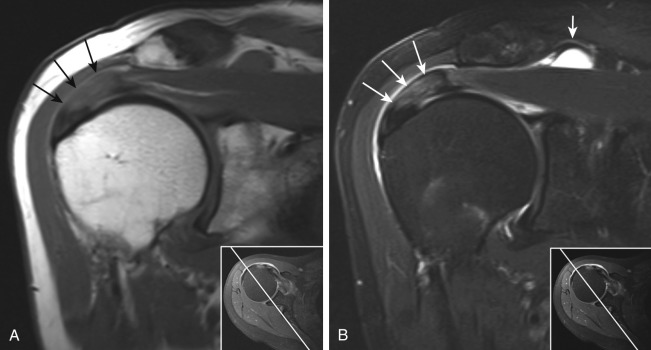Physical Address
304 North Cardinal St.
Dorchester Center, MA 02124
Oblique coronal, oblique sagittal, and axial planes are routinely used ( Figure 52-1 ). Oblique coronal and sagittal sequences are obtained perpendicular and parallel to the glenoid articular surface, respectively. While the patient is supine on the scanner table, the shoulder should be held in neutral to slightly externally rotated position to ensure that the supraspinatus muscle is parallel to the oblique coronal plane.

From anterior to posterior, the rotator cuff is composed of the subscapularis muscle, which attaches on the lesser tuberosity of the humerus; and the supraspinatus, infraspinatus, and teres minor muscles, which attach on the greater tuberosity (see Figure 52-1 ). As in other areas of the body, the normal tendons are homogeneously low in signal intensity on all pulse sequences.
The most common symptoms of rotator cuff tears include pain, especially at night, and pain and weakness with abduction of the arm. Most rotator cuff tears involve the supraspinatus tendon and usually occur in patients older than 40 years of age.
Shoulder impingement syndrome refers to compression of the supraspinatus tendon and subacromial bursa between the coracoacromial arch and humeral head. It can be secondary to multiple causes, including subacromial spurs, osteoarthritis of the acromioclavicular joint, and an os acromiale, among others. Impingement is thought to precipitate degeneration of the rotator cuff tendons, leading to rotator cuff tears.
Tendinopathy (chronic tendon degeneration) manifests on MRI as mildly increased signal intensity and thickening of the tendon ( Figure 52-2 ). Tendon tears demonstrate increased T2-weighted signal intensity, as bright as fluid, within the tendon. Chronic rotator cuff tears may demonstrate superior displacement of the humeral head (“high riding humeral head”), and fatty change and/or atrophy of the rotator cuff muscles (best evaluated on oblique sagittal T1-weighted images).

Become a Clinical Tree membership for Full access and enjoy Unlimited articles
If you are a member. Log in here